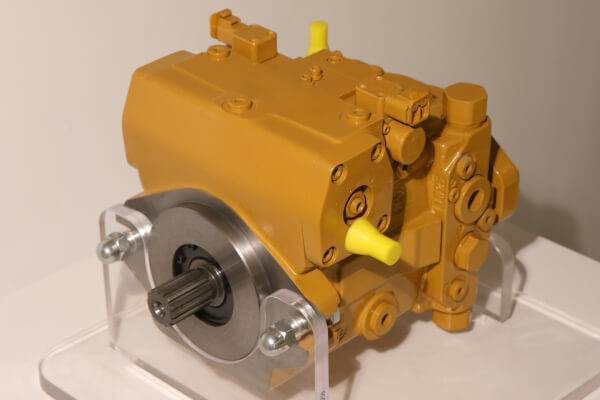Variable swash plate hydraulic pumps are essential in many industrial and mobile applications due to their ability to control fluid flow and pressure precisely. However, like any complex machinery, they can experience issues that require troubleshooting. This guide provides practical tips for diagnosing and resolving common problems with variable swash plate hydraulic pumps.

1. Introduction
Understanding the common issues that can affect variable swash plate hydraulic pumps is crucial for maintaining optimal performance and preventing downtime. This article will cover typical symptoms of pump problems, their possible causes, and step-by-step troubleshooting tips.
2. Common Symptoms and Causes
Noise and Vibration: Excessive noise and vibration can indicate issues such as air entrainment, cavitation, or worn components.
Overheating: Overheating may be caused by excessive load, poor lubrication, or restricted fluid flow.
Low Pressure or Flow: Insufficient pressure or flow can result from internal leaks, clogged filters, or a malfunctioning control mechanism.
Erratic Operation: Inconsistent performance can be due to faulty control valves, improper swash plate angle, or contamination in the hydraulic fluid.
3. Step-by-Step Troubleshooting Tips
A. Noise and Vibration
Check for Air Entrainment: Inspect the hydraulic fluid for foam or bubbles. Ensure all connections are tight and there are no leaks in the suction line.
Inspect for Cavitation: Verify that the fluid reservoir is adequately filled and the suction line is not restricted. Ensure the pump is operating within its specified range.
Examine Components for Wear: Check the swash plate, pistons, and bearings for signs of wear or damage. Replace any worn parts.
B. Overheating
Evaluate Load Conditions: Ensure the pump is not operating under excessive load. Check for blockages or restrictions in the hydraulic circuit.
Assess Lubrication: Verify that the hydraulic fluid is at the correct level and of the appropriate type. Replace the fluid if it is contaminated or degraded.
Inspect Cooling System: Ensure that any cooling components, such as heat exchangers or fans, are functioning correctly and not obstructed.
C. Low Pressure or Flow
Check for Internal Leaks: Inspect seals, gaskets, and o-rings for signs of wear or damage. Replace any leaking components.
Examine Filters and Strainers: Clean or replace clogged filters and strainers. Ensure that the hydraulic fluid is clean and free of contaminants.
Verify Control Mechanisms: Test the control valves and electronic control unit (ECU) for proper operation. Ensure the swash plate angle is correctly adjusted.
D. Erratic Operation
Test Control Valves: Inspect the control valves for proper functioning. Clean or replace any valves that are sticking or malfunctioning.
Adjust Swash Plate Angle: Ensure the swash plate is set to the correct angle. Adjust as necessary to match the desired flow and pressure specifications.
Check for Contamination: Test the hydraulic fluid for contamination. Replace the fluid and clean the system if contaminants are found.
4. Preventive Maintenance Tips
Regular Inspections: Conduct routine inspections of the pump and its components to identify potential issues before they become serious problems.
Fluid Analysis: Regularly test the hydraulic fluid for contamination, viscosity, and other properties. Replace the fluid as needed to maintain optimal performance.
Scheduled Maintenance: Follow the manufacturer’s recommended maintenance schedule for tasks such as filter changes, component inspections, and system cleanings.
Training and Documentation: Ensure that personnel are trained in proper pump operation and maintenance procedures. Keep detailed records of all maintenance activities and issues encountered.
5. Conclusion
Proper troubleshooting and maintenance are essential for ensuring the reliable operation of variable swash plate hydraulic pumps. By understanding common symptoms and their causes, and following the step-by-step troubleshooting tips provided in this guide, you can effectively diagnose and resolve issues to keep your hydraulic systems running smoothly.
By following these troubleshooting tips, you can minimize downtime and extend the lifespan of your variable swash plate hydraulic pumps, ensuring they continue to perform effectively in your applications.
Post time: Jul-26-2024
